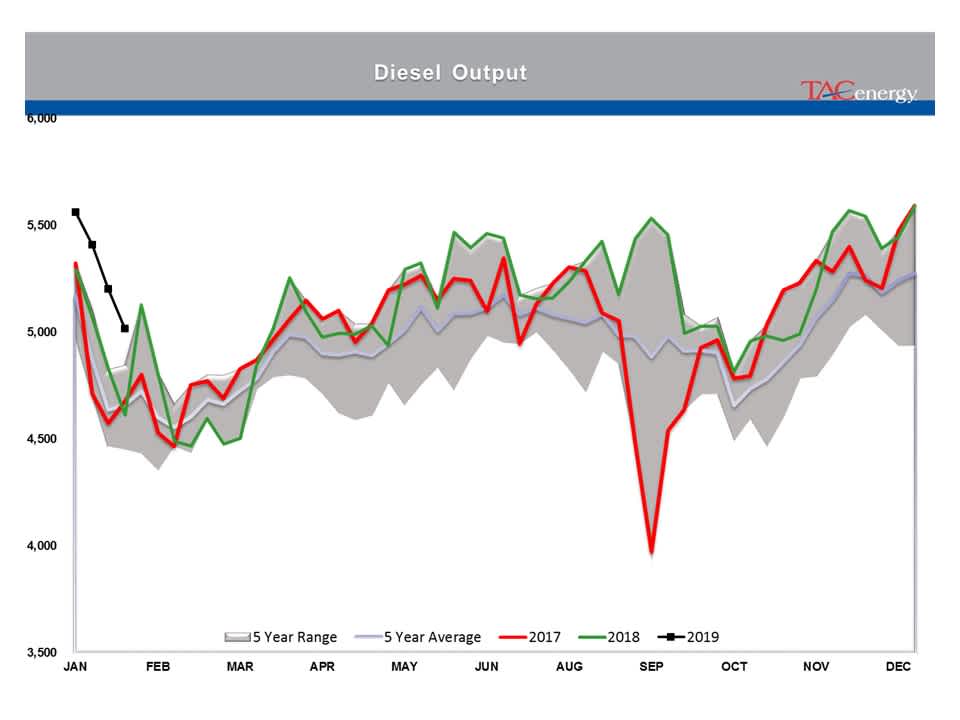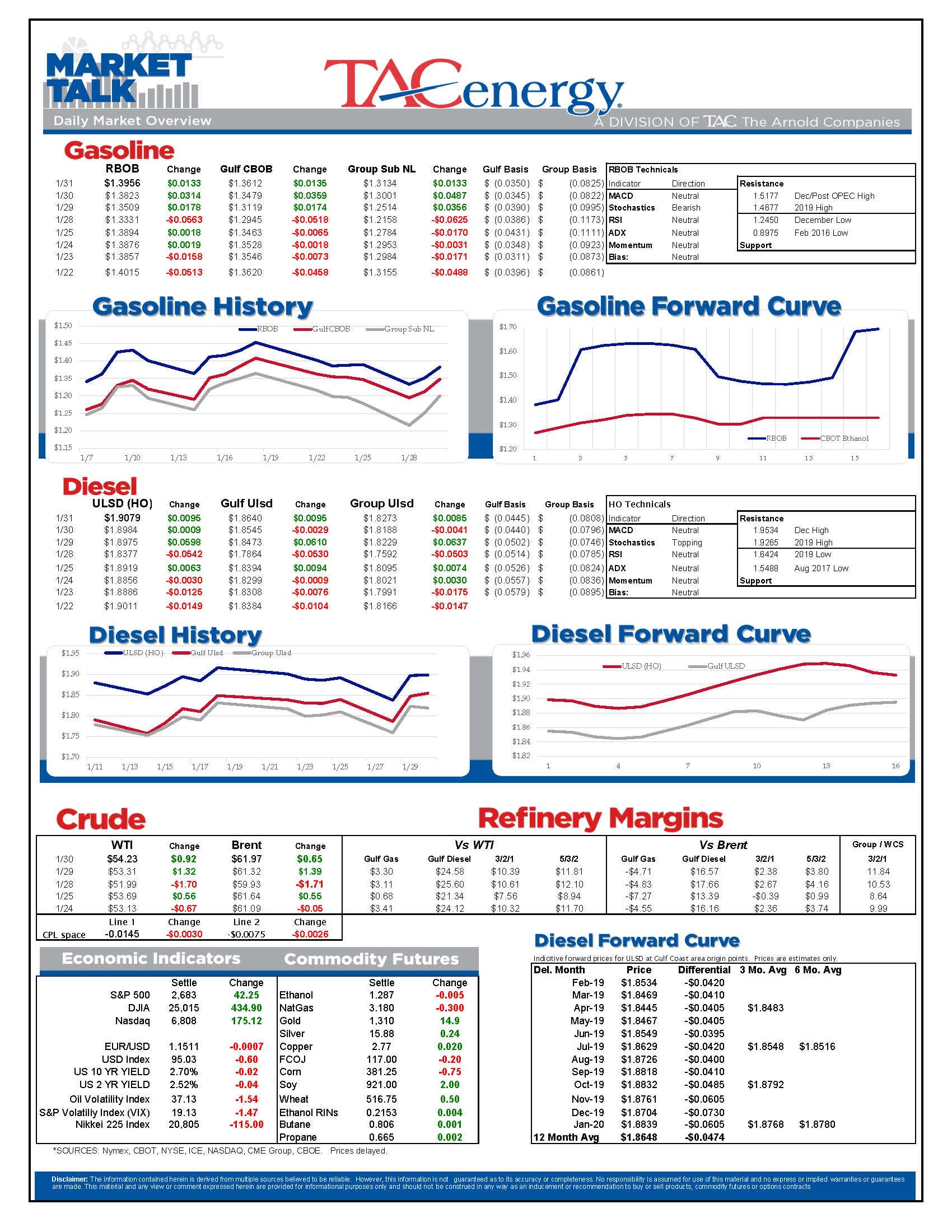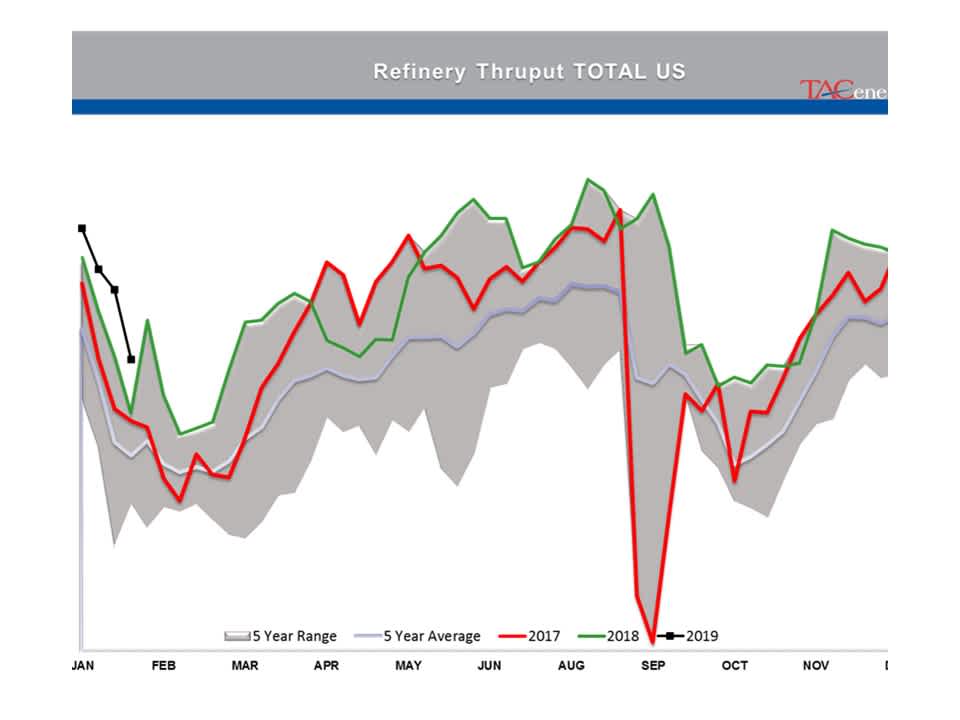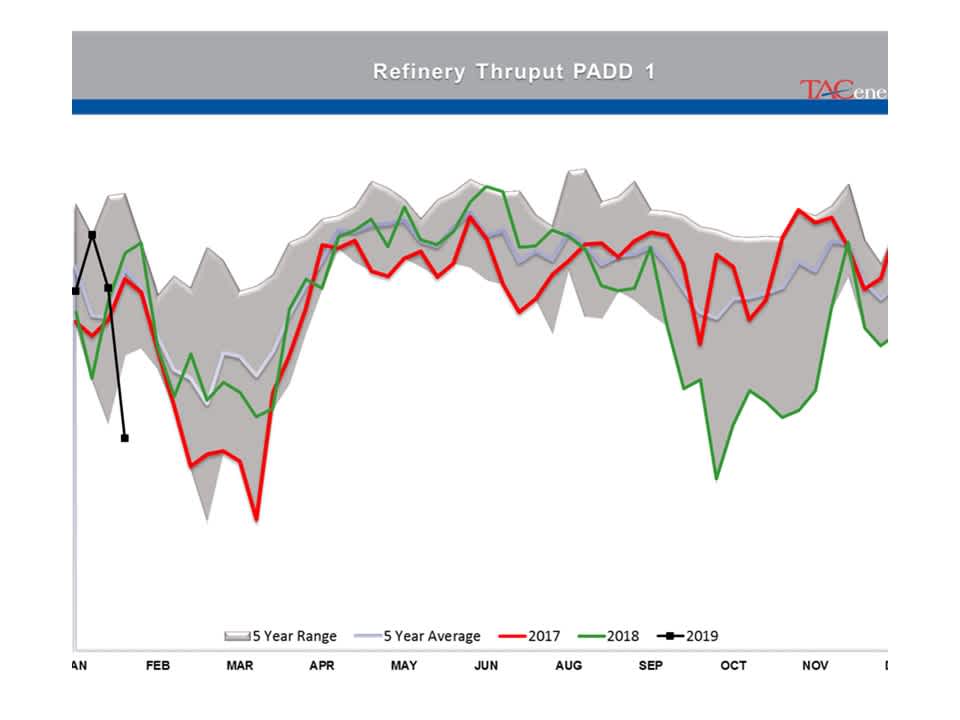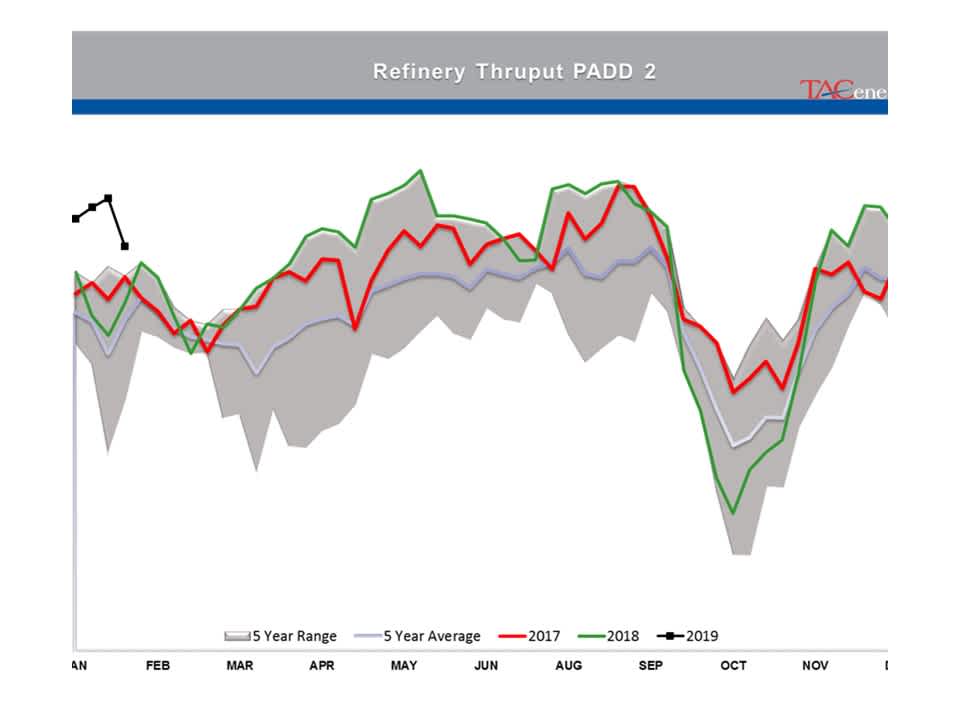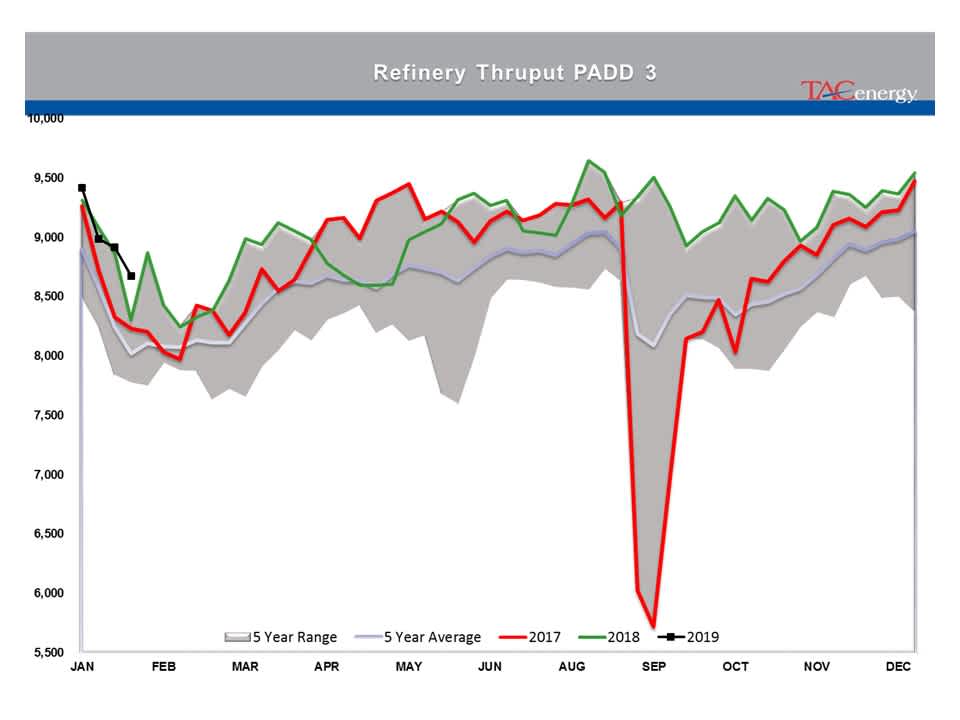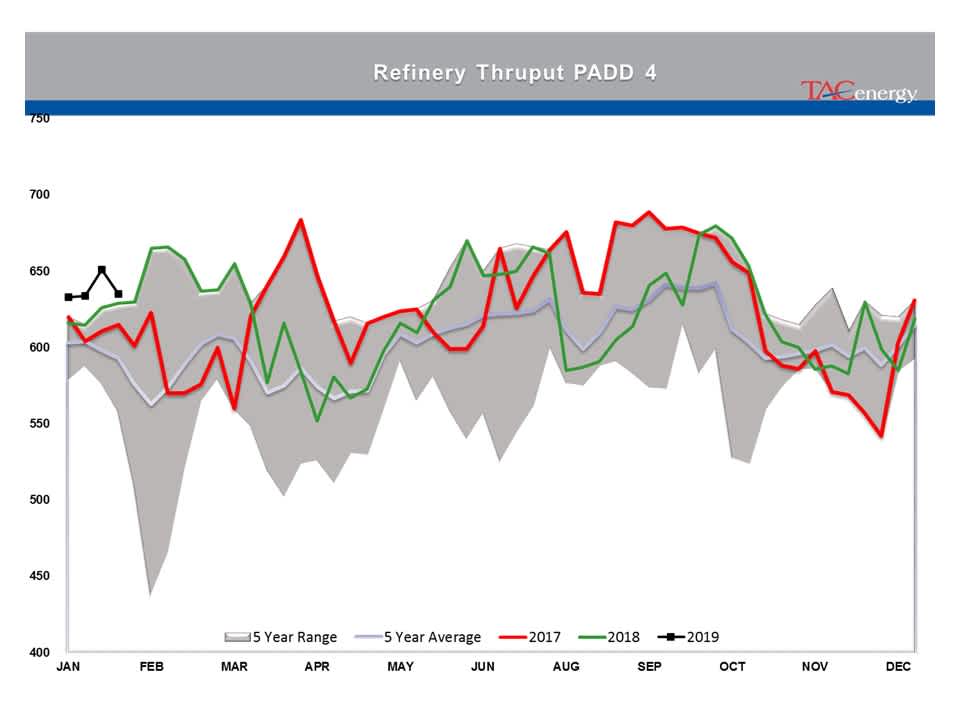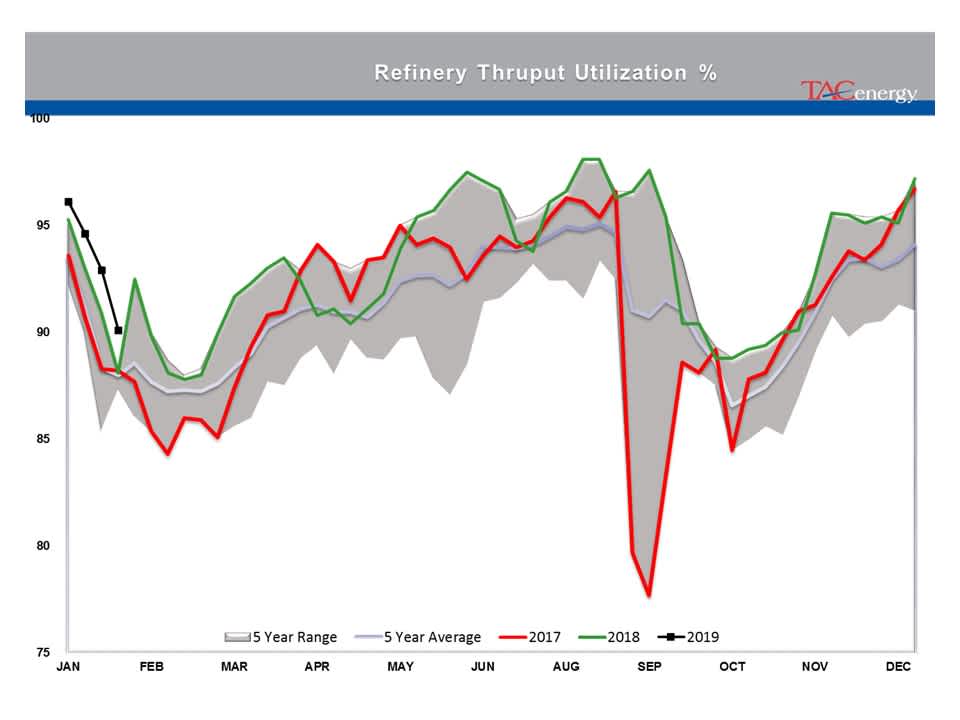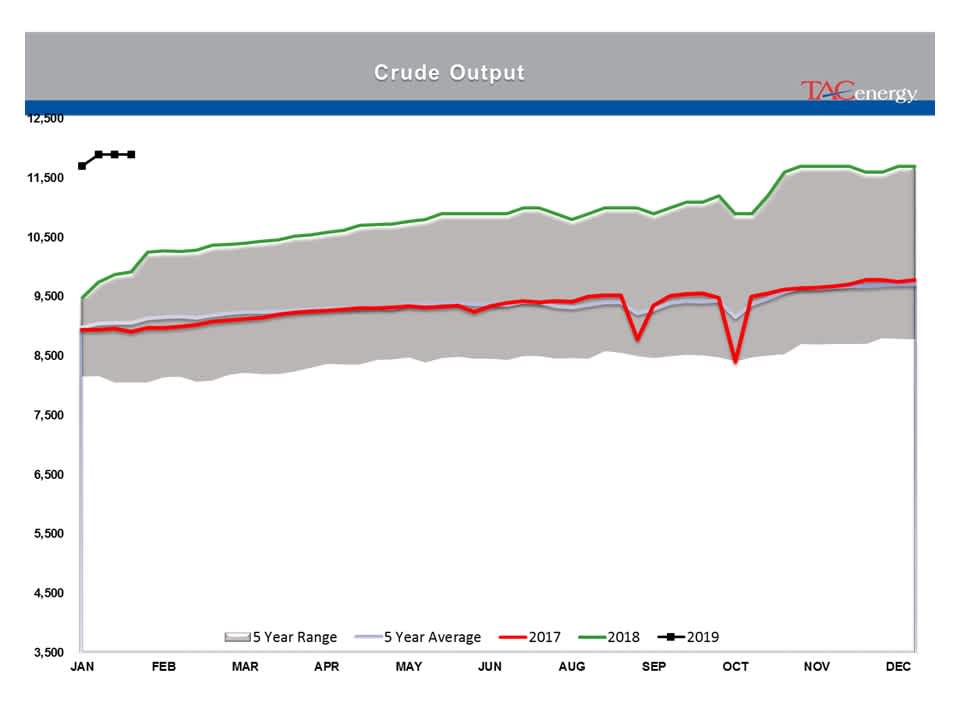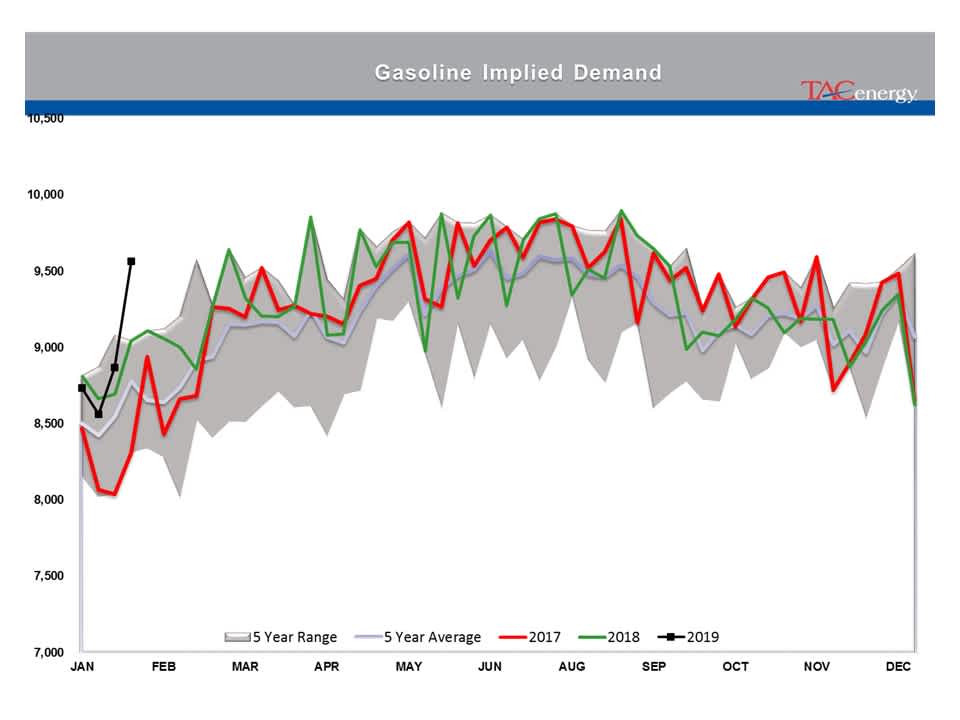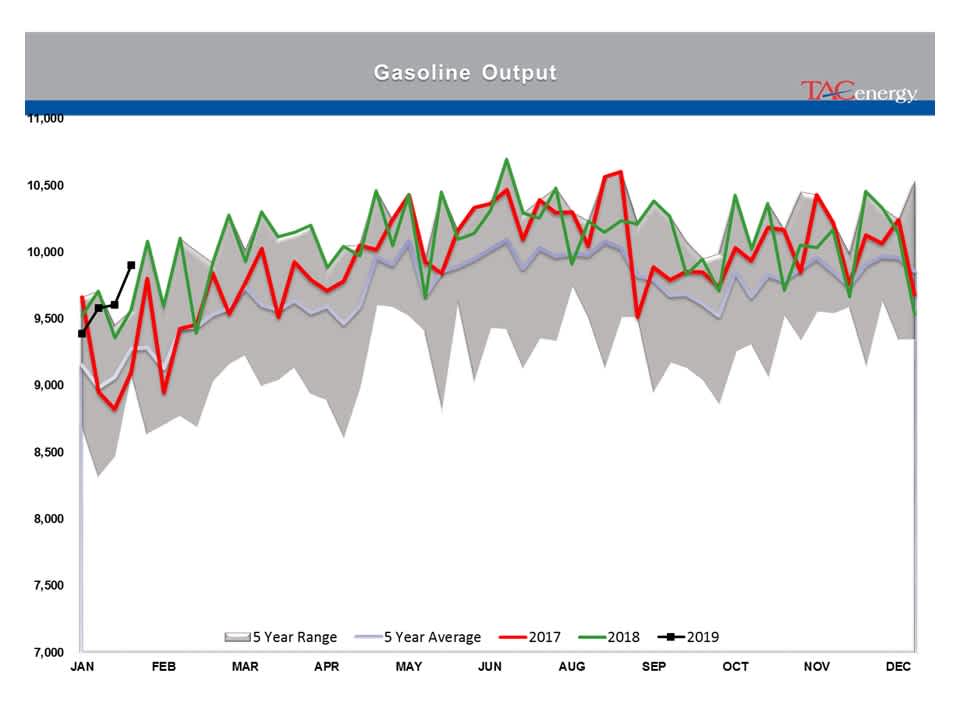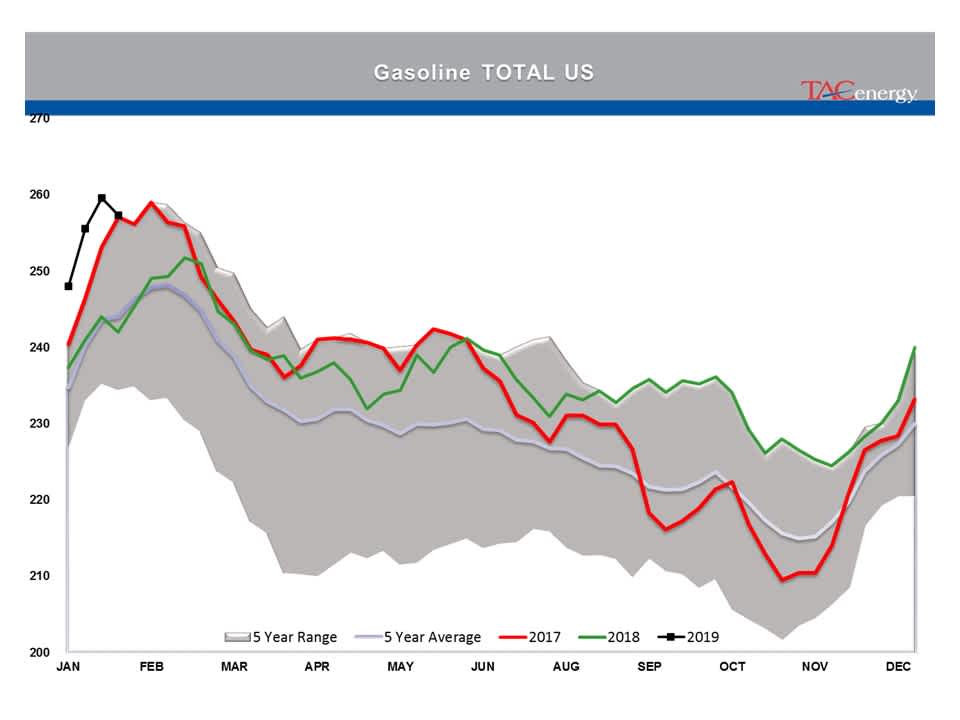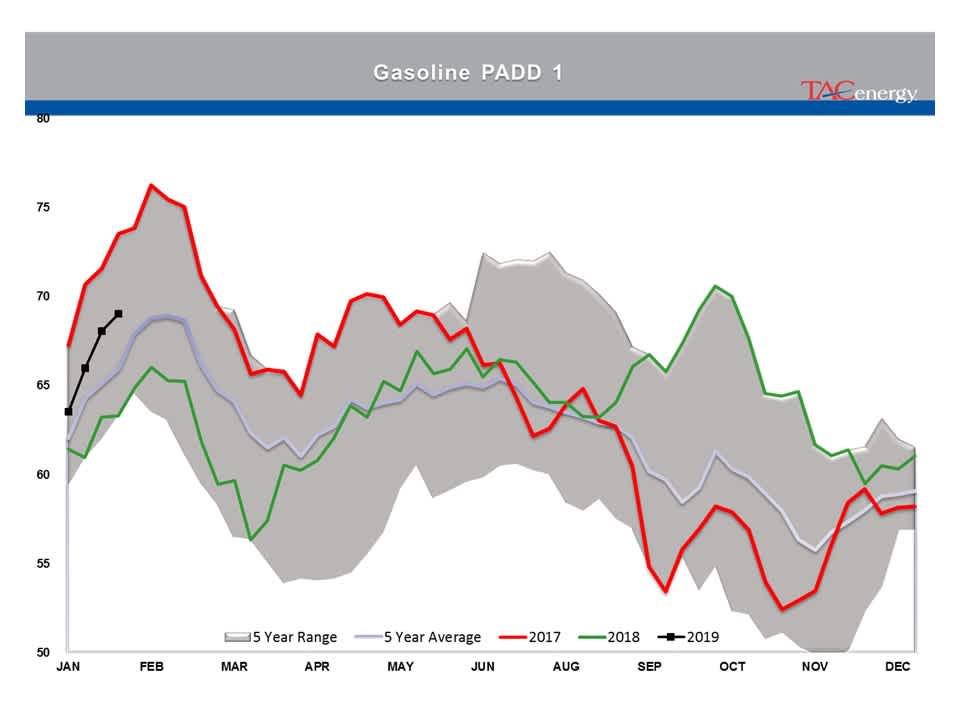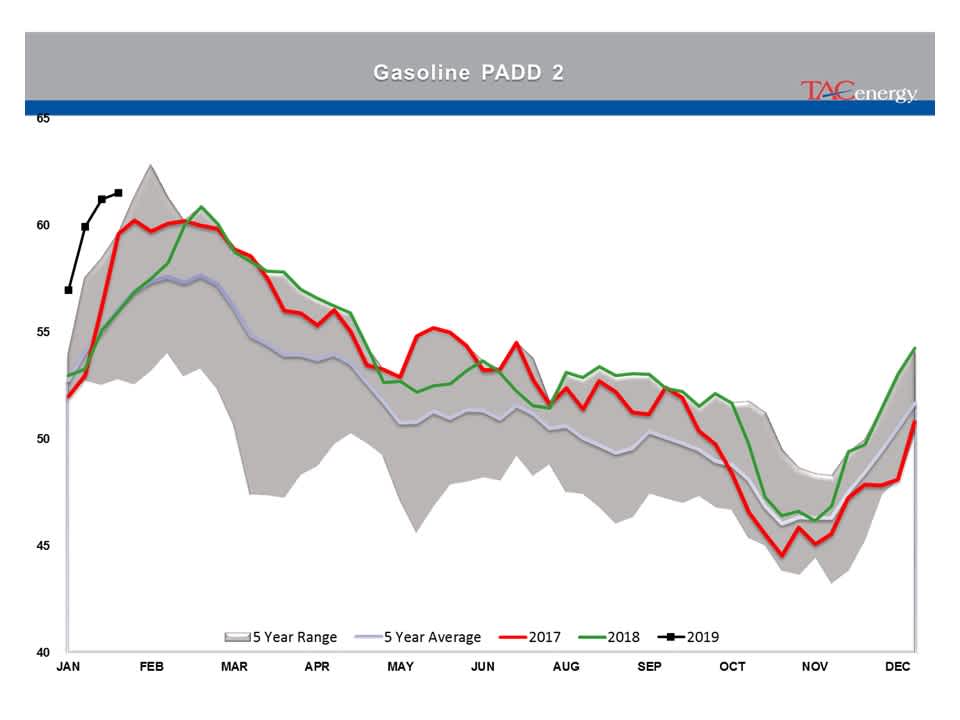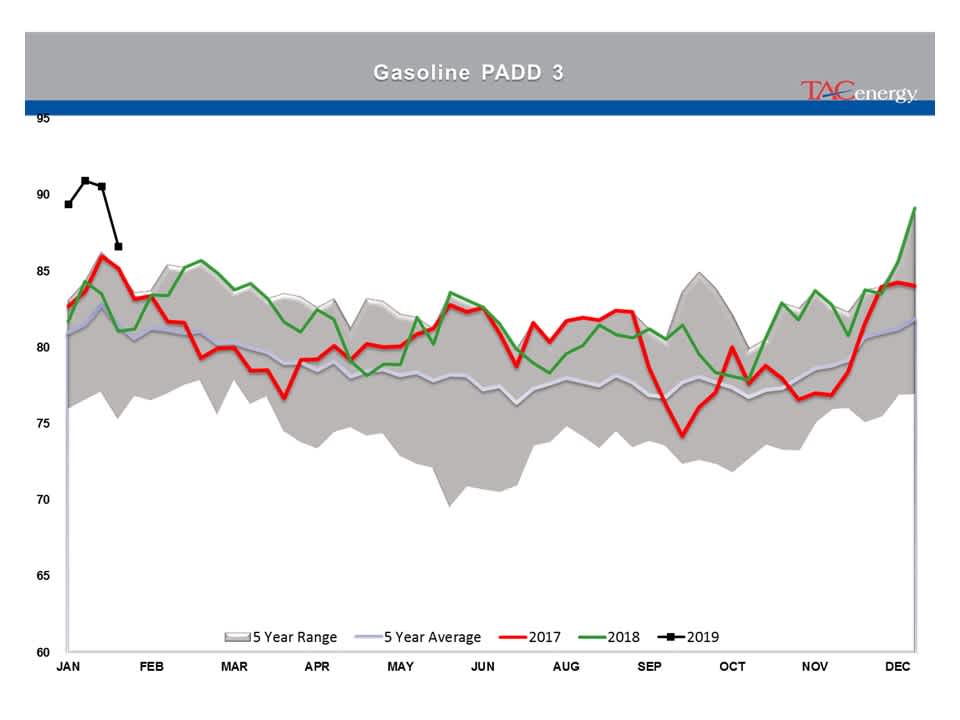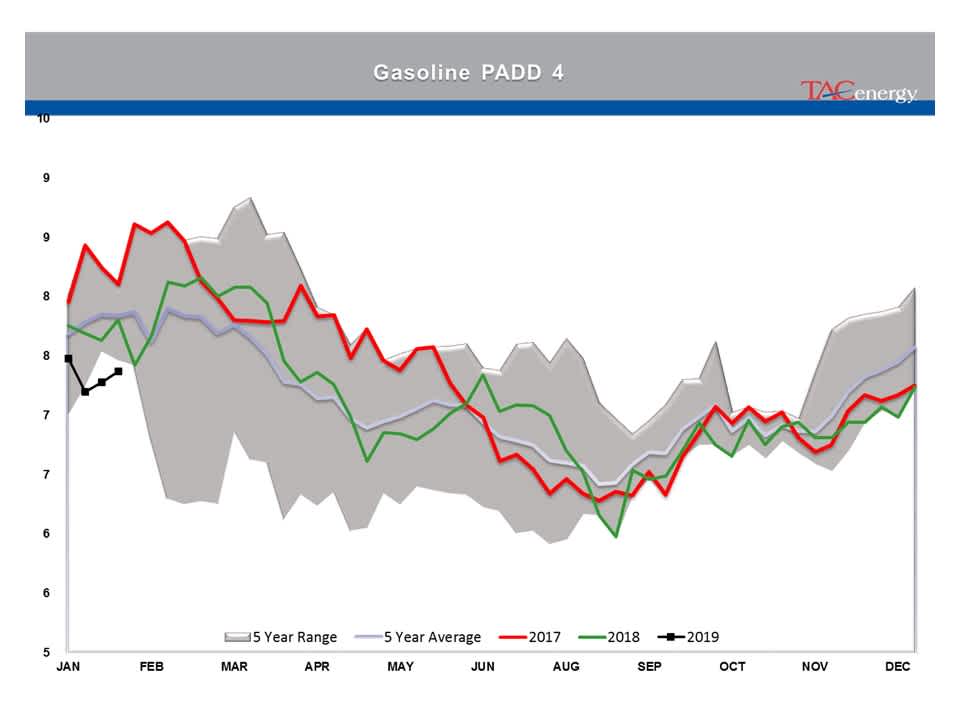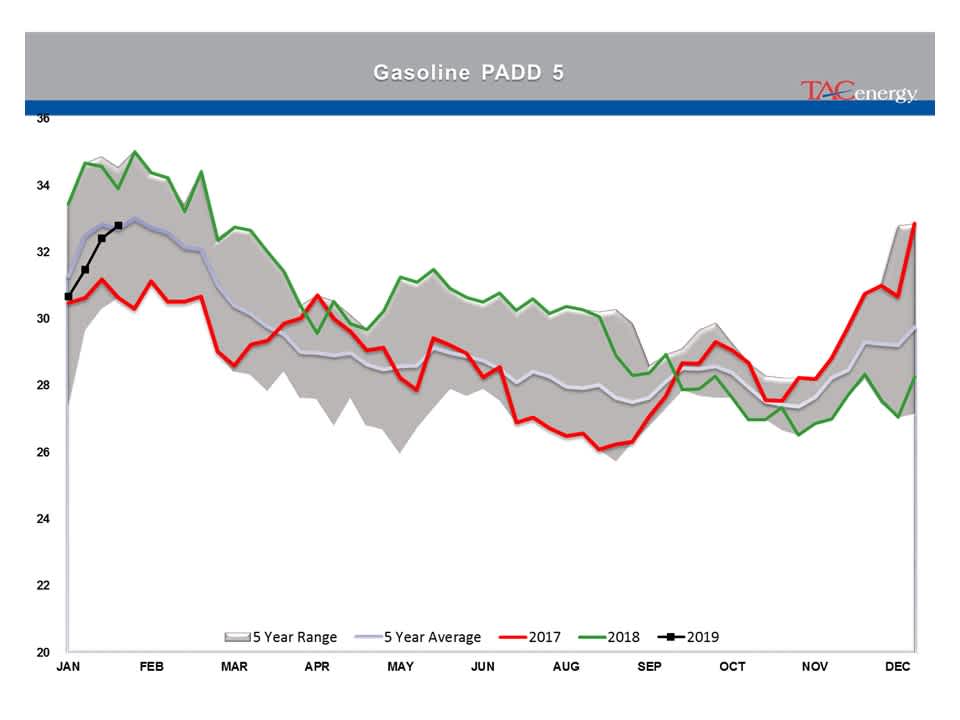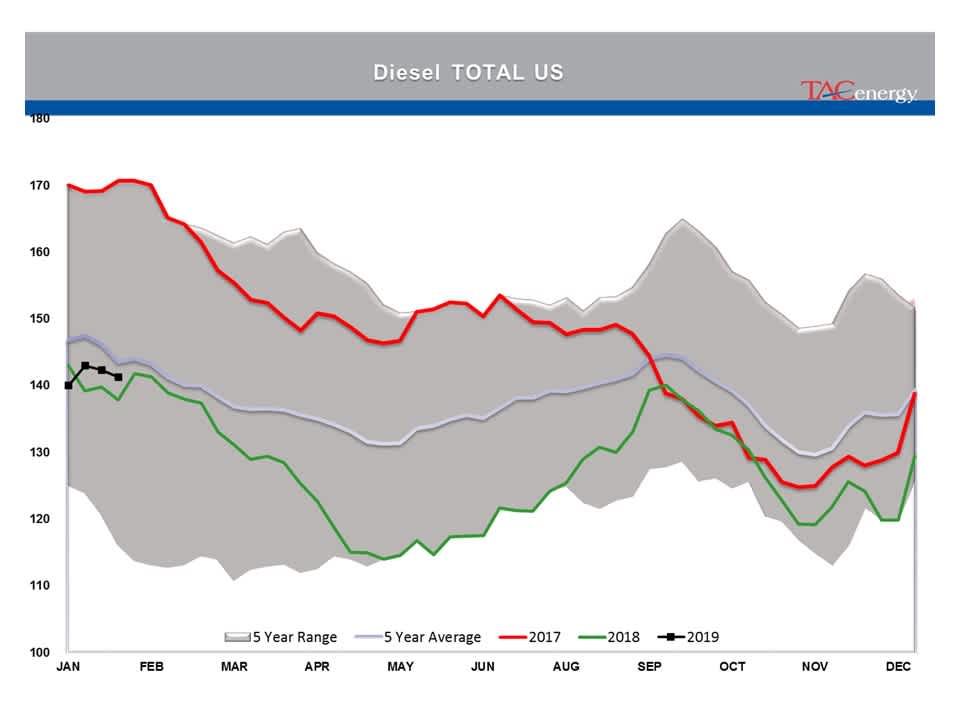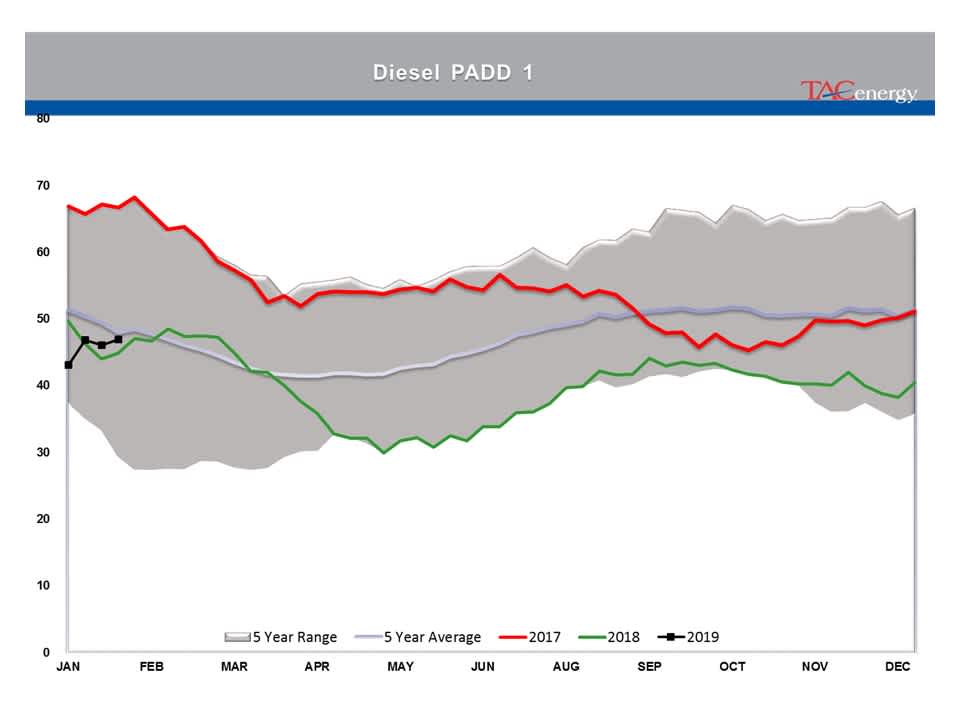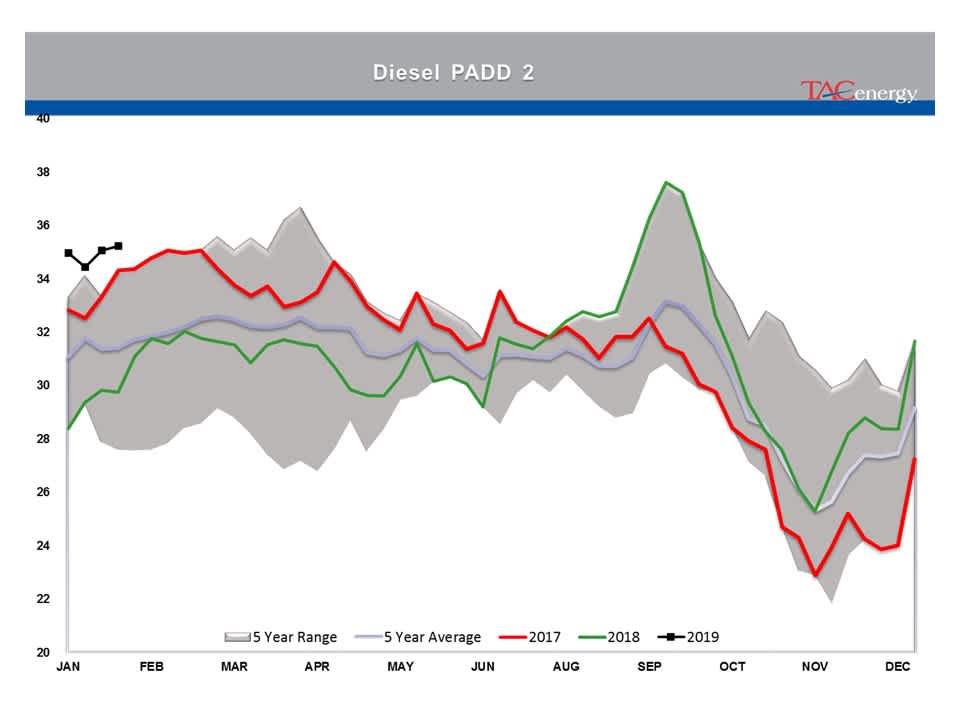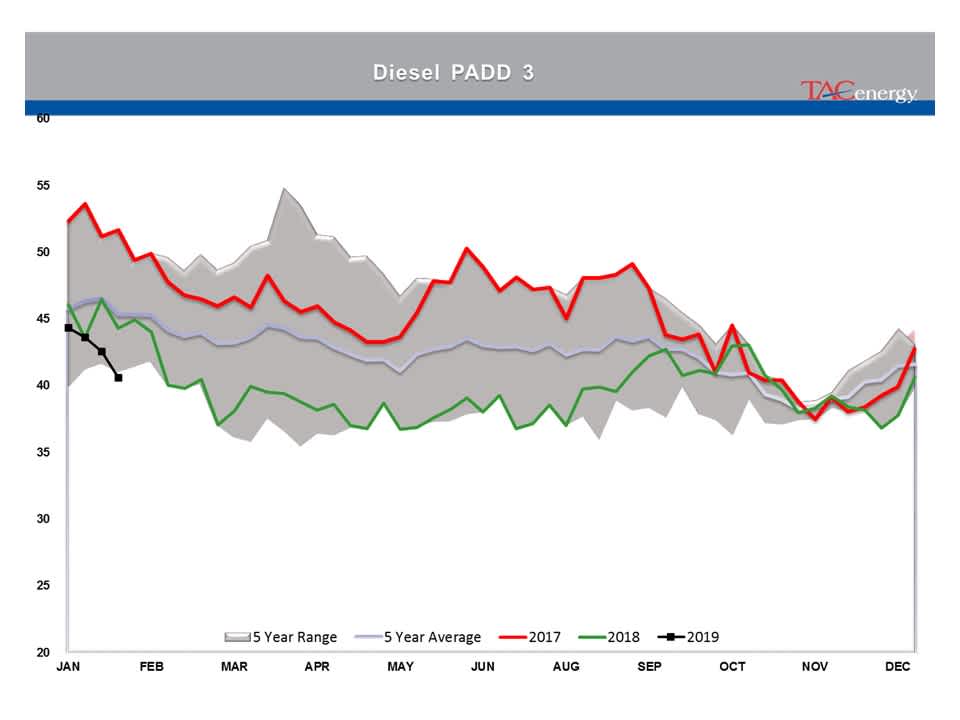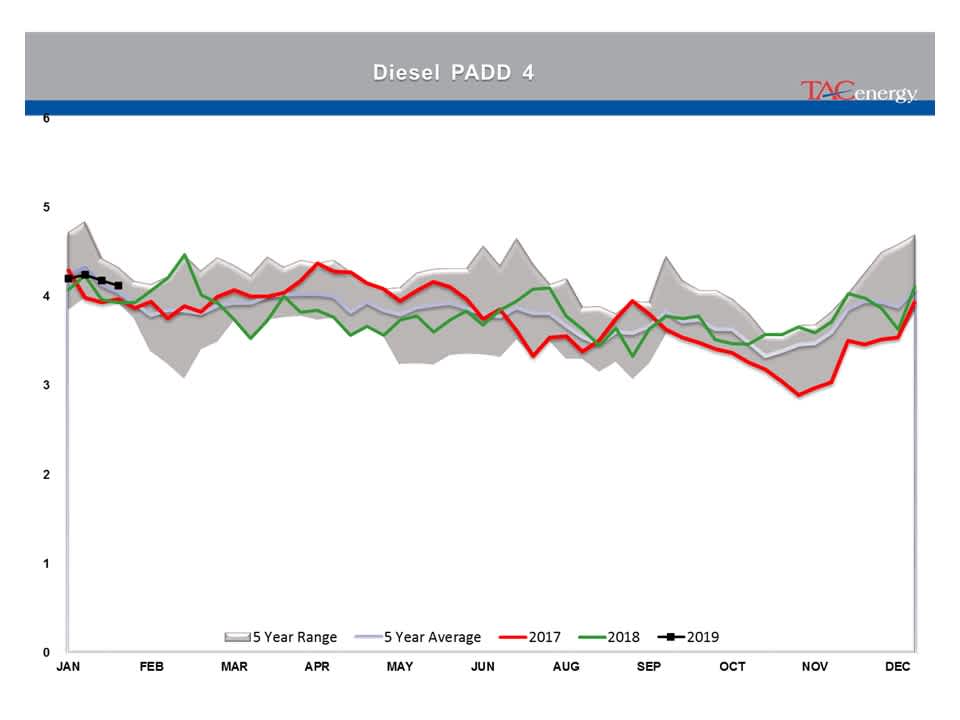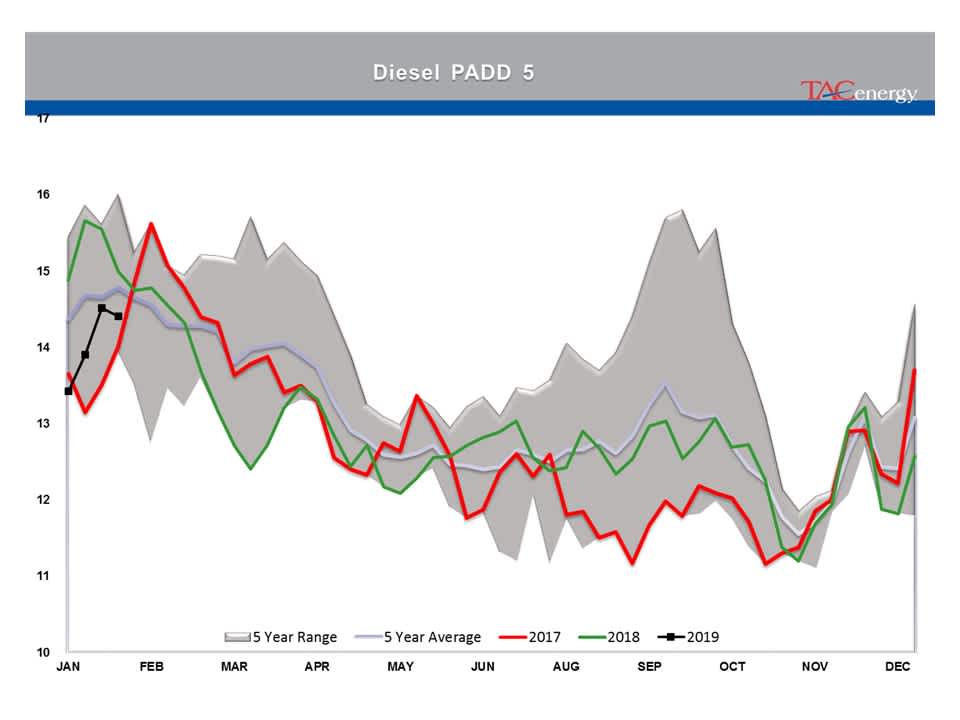Energy Prices Moving Higher For 3rd Day

Energy prices are moving higher for a 3rd day to start Thursday’s session, with momentum from some bullish data points in the DOE report, and a market-friendly FOMC statement carrying through from Wednesday’s session. Prices are once again within striking distance of their December highs, which capped the last rally attempt, and look to be the difference between this rally lasting a few days, and it lasting a few weeks.
A little Patience from the FED went a long way in financial markets, with US equity markets surging after the central bank sent a strong signal that it would not rush further monetary tightening. Monday the CME’s FEDWATCH tool showed roughly a 20% chance of at least 1 more interest rate hike in 2019, and a 10% probability of a decrease. This morning, after the “patience statement”, there’s a 5% chance of an increase, and a 20% chance of a decrease in the next 12 months. You can argue whether or not this is good for the economy as a whole, but it’s hard to argue that more accommodative monetary policy is anything but good news for stock markets.
Reports (also known as rumors) that the White House was considering a release of the US Strategic Petroleum Reserve to counter any negative effects from the Venezuelan sanctions suggest the administration has a much better handle on how to work the media than they do an oil refinery. In reality, if the rumors manage to take the steam out of the rally in oil & products futures, that would seem to be a mission accomplished, even if there is a negative impact to Gulf Coast refiners.
Speaking of which, while much of the focus is on potential fall-out with Citgo and its 2 Gulf Coast refineries due to sanctions, it was Citgo’s Chicago-area headline that had the most market impact Wednesday, when reports of a reduction in processing rates due to extreme cold sent Chicago gasoline prices up nearly 10 cents on the day.
Speaking of refinery run cuts: The headline drop of 586,000 barrels/day of refinery throughput seemed to catch some traders off-guard based on the strong reaction in refined product prices after the report. Then again, even after the 3.4% drop during the week, refinery runs are still 450,000 barrels/day higher than they were this time last year…and last year’s figure was a record high for the 4th week in January.
Unbelievable? The weekly gasoline demand estimate from the DOE surged nearly 8% last week, and at 9.56 million barrels/day is ½ million bpd higher than this time last year, and is at a level historically only witnessed during the summer driving season. Considering the numerous anecdotes about gasoline consumption slowing last week on the heels of 2 winter storms. Read the methodology notes from the EIA if you need a reminder why the weekly estimates are not reliable as a true indicator of actual consumption. If the theory that implied demand spiked as secondary fuel inventories were stockpiled ahead of the storm, we should see a large correction in the estimate in the next 2 weeks.
Latest Posts
Gasoline Futures Are Leading The Way Lower This Morning
The Sell-Off Continues In Energy Markets, RBOB Gasoline Futures Are Now Down Nearly 13 Cents In The Past Two Days
Week 15 - US DOE Inventory Recap
Prices To Lease Space On Colonial’s Main Gasoline Line Continue To Rally This Week
Social Media
News & Views
View All
Gasoline Futures Are Leading The Way Lower This Morning
It was a volatile night for markets around the world as Israel reportedly launched a direct strike against Iran. Many global markets, from equities to currencies to commodities saw big swings as traders initially braced for the worst, then reversed course rapidly once Iran indicated that it was not planning to retaliate. Refined products spiked following the initial reports, with ULSD futures up 11 cents and RBOB up 7 at their highest, only to reverse to losses this morning. Equities saw similar moves in reverse overnight as a flight to safety trade soon gave way to a sigh of relief recovery.
Gasoline futures are leading the way lower this morning, adding to the argument that we may have seen the spring peak in prices a week ago, unless some actual disruption pops up in the coming weeks. The longer term up-trend is still intact and sets a near-term target to the downside roughly 9 cents below current values. ULSD meanwhile is just a nickel away from setting new lows for the year, which would open up a technical trap door for prices to slide another 30 cents as we move towards summer.
A Reuters report this morning suggests that the EPA is ready to announce another temporary waiver of smog-prevention rules that will allow E15 sales this summer as political winds continue to prove stronger than any legitimate environmental agenda. RIN prices had stabilized around 45 cents/RIN for D4 and D6 credits this week and are already trading a penny lower following this report.
Delek’s Big Spring refinery reported maintenance on an FCC unit that would require 3 days of work. That facility, along with several others across TX, have had numerous issues ever since the deep freeze events in 2021 and 2024 did widespread damage. Meanwhile, overnight storms across the Midwest caused at least one terminal to be knocked offline in the St. Louis area, but so far no refinery upsets have been reported.
Meanwhile, in Russia: Refiners are apparently installing anti-drone nets to protect their facilities since apparently their sling shots stopped working.
Click here to download a PDF of today's TACenergy Market Talk.

The Sell-Off Continues In Energy Markets, RBOB Gasoline Futures Are Now Down Nearly 13 Cents In The Past Two Days
The sell-off continues in energy markets. RBOB gasoline futures are now down nearly 13 cents in the past two days, and have fallen 16 cents from a week ago, leading to questions about whether or not we’ve seen the seasonal peak in gasoline prices. ULSD futures are also coming under heavy selling pressure, dropping 15 cents so far this week and are trading at their lowest level since January 3rd.
The drop on the weekly chart certainly takes away the upside momentum for gasoline that still favored a run at the $3 mark just a few days ago, but the longer term up-trend that helped propel a 90-cent increase since mid-December is still intact as long as prices stay above the $2.60 mark for the next week. If diesel prices break below $2.50 there’s a strong possibility that we see another 30 cent price drop in the next couple of weeks.
An unwind of long positions after Iran’s attack on Israel was swatted out of the sky without further escalation (so far anyway) and reports that Russia is resuming refinery runs, both seeming to be contributing factors to the sharp pullback in prices.
Along with the uncertainty about where the next attacks may or may not occur, and if they will have any meaningful impact on supply, come no shortage of rumors about potential SPR releases or how OPEC might respond to the crisis. The only thing that’s certain at this point, is that there’s much more spare capacity for both oil production and refining now than there was 2 years ago, which seems to be helping keep a lid on prices despite so much tension.
In addition, for those that remember the chaos in oil markets 50 years ago sparked by similar events in and around Israel, read this note from the NY Times on why things are different this time around.
The DOE’s weekly status report was largely ignored in the midst of the big sell-off Wednesday, with few noteworthy items in the report.
Diesel demand did see a strong recovery from last week’s throwaway figure that proves the vulnerability of the weekly estimates, particularly the week after a holiday, but that did nothing to slow the sell-off in ULSD futures.
Perhaps the biggest next of the week was that the agency made its seasonal changes to nameplate refining capacity as facilities emerged from their spring maintenance.
PADD 2 saw an increase of 36mb/day, and PADD 3 increased by 72mb/day, both of which set new records for regional capacity. PADD 5 meanwhile continued its slow-motion decline, losing another 30mb/day of capacity as California’s war of attrition against the industry continues. It’s worth noting that given the glacial pace of EIA reporting on the topic, we’re unlikely to see the impact of Rodeo’s conversion in the official numbers until next year.
Speaking of which, if you believe the PADD 5 diesel chart below that suggests the region is running out of the fuel, when in fact there’s an excess in most local markets, you haven’t been paying attention. Gasoline inventories on the West Coast however do appear consistent with reality as less refining output and a lack of resupply options both continue to create headaches for suppliers.

